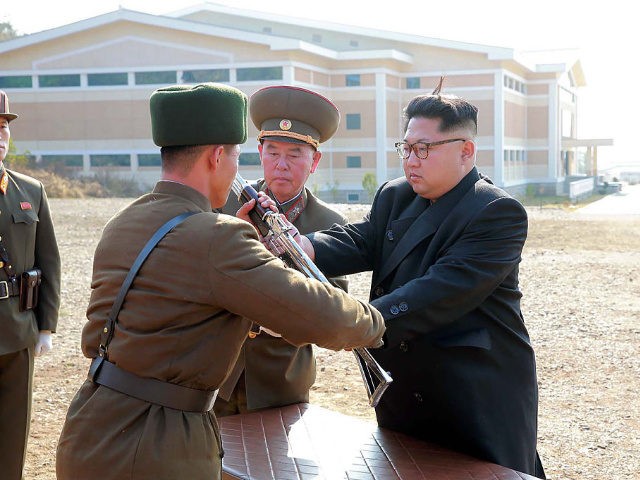A South Korean human rights organization called the Transitional Justice Working Group (TJWG) published a report on Tuesday that identified over 300 sites in North Korea where the government enacts public executions and extrajudicial killings.
Many of the executions involved multiple killings and were witnessed by hundreds of people, according to the 610 North Korean defectors interviewed by TWJG.
An admittedly small survey sample — polling North Koreans is one of the most difficult enterprises imaginable — suggested a very high percentage of North Korean citizens have witnessed at least one execution during their lifetimes.
The youngest individual to witness a killing claimed to have been seven years old at the time. The report indicated some of the execution sites are located on school grounds.
Some of the people executed in these accounts were accused of high crimes and may have been targeted by one of North Korea’s frequent and bloody political purges, while others were executed for infractions as minor as “stealing copper and livestock” or crossing the border to China without permission.
“Brief ‘trials’ almost always occur on the spot immediately before a public execution, where charges are stated and a sentence given without legal counsel for the accused, who very often appears ‘half dead’ when brought to the site by the authorities,” the report asserted.
The defectors said the remains of those executed by the North Korean government are rarely returned to their family members. Instead, they are usually buried in unmarked graves, cremated, or merely tossed into the wilderness.
The vast majority of the execution sites described in the report are located near the Chinese border, which is also the region of North Korea from which most defectors emerge.
The TJWG report could not be verified by third-party media organizations given it is difficult to obtain reliable information from North Korea or visit suspected execution sites. The authors of the report also said they withheld some details about the sites to avoid betraying their location to the North Korean government, which might decide to sanitize them.
The government-run South Korean Institute for National Unification published a white paper last week stating the North Korean regime continues to kill its citizens for a wide range of offenses but judged that “the frequency of public executions is on decline compared to the past, and the number of cases where citizens are mobilized to such public execution sites is also decreasing.”
“It is yet unclear whether the decline is due to an actual drop in the number of public executions or because the number of undisclosed executions of the death penalty or secret summary executions is increasing,” the white paper added.
The North Korean government has admitted to the United Nations that it conducts public executions but claimed they are only used in “exceptional cases, where the crime committed was exceptionally grave.”

COMMENTS
Please let us know if you're having issues with commenting.